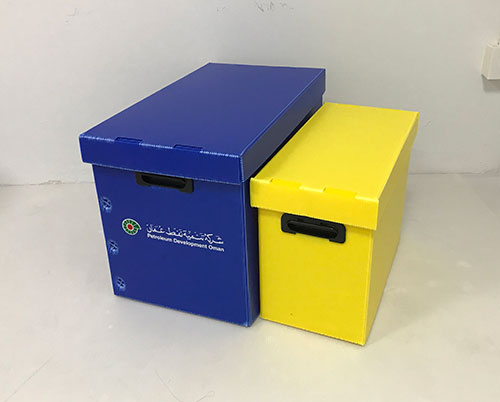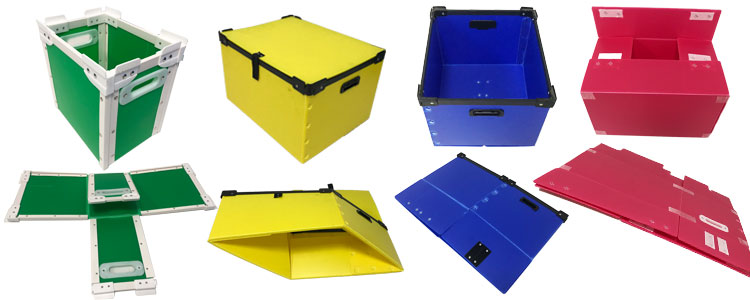©Copyright 2019 Suzhou Huiyuan Plastic Products Co., Ltd All rights reserved. Terms and Conditions Designed by iwonder.cnSite Map
In today’s fast-paced logistics and e-commerce world, choosing the right shipping materials is more important than ever. Among these materials, plastic shipping boxes have emerged as a durable, reusable, and cost-effective alternative to traditional cardboard boxes. Whether you are an e-commerce business, a food distributor, or a manufacturing company, investing in the right plastic shipping boxes can make a significant difference in protecting your products, reducing costs, and improving operational efficiency. However, before purchasing these boxes, several key considerations must be taken into account.
One of the first aspects to evaluate when buying plastic shipping boxes is the material. Most shipping boxes are made from polypropylene (PP), high-density polyethylene (HDPE), or recycled plastics. Each material comes with its own set of benefits:
Polypropylene (PP): Lightweight, durable, and resistant to chemicals, making it ideal for food, pharmaceuticals, and industrial use.
High-Density Polyethylene (HDPE): Stronger and more rigid, offering excellent impact resistance, suitable for heavy or fragile products.
Recycled Plastic: Environmentally friendly option that can help reduce your carbon footprint while still providing adequate strength.
Durability is especially crucial if the boxes are intended for multiple uses or long-distance shipping. Weak or low-quality plastic can crack, warp, or degrade under heavy loads or extreme temperatures, leading to damaged products and potential customer dissatisfaction.

Selecting the right size is essential to maximize efficiency and minimize shipping costs. Oversized boxes can lead to wasted space and higher shipping fees, while undersized boxes may not adequately protect the contents. When evaluating plastic shipping boxes, consider:
Dimensions: Ensure the length, width, and height of the box can accommodate your products comfortably.
Stackability: Boxes designed to stack securely can save storage space in warehouses or during transport.
Weight Capacity: Different boxes have different load-bearing limits; check manufacturer specifications to ensure they can handle the weight of your items.
Custom-sized plastic shipping boxes are also an option, especially for irregularly shaped or fragile products. Many manufacturers offer bespoke solutions to optimize protection and space utilization.
Modern plastic shipping boxes come with various design features that can improve functionality and ease of use. Some popular features include:
Interlocking Lids: Secure lids prevent accidental openings during transport.
Foldable or Collapsible Designs: Useful for saving storage space when boxes are not in use.
Handles or Grip Areas: Make manual handling easier, reducing the risk of injuries.
Ventilation Holes: Ideal for perishable goods or items that require airflow.
Considering these features can help you choose boxes that not only protect products but also enhance operational efficiency and employee safety.
One of the biggest advantages of plastic shipping boxes over cardboard is reusability. Investing in reusable boxes can lower long-term costs and reduce environmental impact. When evaluating boxes, consider:
Lifespan: High-quality plastic boxes can be reused for years, making them cost-effective over time.
Recyclability: Choose boxes made from recyclable materials to support sustainability initiatives.
Hygiene and Cleanability: Plastic boxes can be easily washed and sanitized, which is especially important for food or pharmaceutical industries.
Many companies are now adopting circular supply chain practices, using durable plastic boxes that can be returned, cleaned, and reused multiple times.
While plastic shipping boxes may have a higher upfront cost compared to cardboard alternatives, their longevity and durability often result in lower total costs over time. Key cost-related factors to consider include:
Unit Price vs. Lifespan: Higher-quality boxes may cost more initially but provide better value in the long run.
Bulk Orders: Ordering in bulk can significantly reduce per-unit costs.
Shipping and Storage Costs: Lightweight and stackable boxes can save on shipping fees and warehouse space.
Maintenance: Consider cleaning or repair costs if boxes are intended for repeated use.
Balancing quality and cost is critical to ensure that your investment in plastic shipping boxes is economical and efficient.
Choosing the right supplier or manufacturer is as important as selecting the right box. A reliable plastic shipping boxes manufacturer or supplier can provide consistent quality, timely delivery, and technical support. When evaluating suppliers, consider:
Experience and Reputation: Established manufacturers often have better quality control and production standards.
Customization Services: Ability to produce custom sizes, colors, or branding on boxes.
Delivery and Logistics: Timely shipping ensures your operations remain smooth.
After-Sales Support: Access to technical assistance and replacement parts if needed.
Working with a trustworthy supplier reduces the risk of receiving substandard products or encountering delays.
Different industries have unique requirements for shipping boxes. When purchasing plastic shipping boxes, consider whether the box meets your industry standards:
Food and Beverage: Must comply with food-grade standards, be easy to clean, and prevent contamination.
Pharmaceuticals: Require sterilizable boxes and protection against environmental hazards.
Electronics: Anti-static or shock-resistant boxes may be necessary to prevent damage.
E-Commerce and Retail: Lightweight, durable, and stackable boxes help streamline shipping and handling.
By aligning your box choice with industry regulations, you ensure product safety and compliance with legal standards.
Finally, branding can be an important factor in your choice of plastic shipping boxes. Many manufacturers offer customization options such as logos, colors, and labels. Branded boxes can enhance your company’s image, provide better customer recognition, and help with inventory management. Some considerations include:
Printing Techniques: Screen printing, hot stamping, or stickers.
Color Options: Choosing distinct colors for different product lines or departments.
Logo Placement: Ensuring your brand is visible while maintaining box functionality.
Custom boxes can improve brand visibility while also serving practical purposes in logistics.

Investing in plastic shipping boxes requires careful consideration of multiple factors: material quality, size, design features, sustainability, cost, supplier reliability, industry requirements, and customization options. Taking the time to evaluate each of these aspects ensures that your business benefits from efficient shipping, product protection, and long-term cost savings.
When sourcing plastic shipping boxes from huiyuansjplastic.com, it’s advisable to work with experienced manufacturers and suppliers who understand your needs and can offer tailored solutions. By doing so, you not only improve logistics efficiency but also contribute to a more sustainable and professional supply chain.
For businesses looking to enhance their shipping operations, selecting the right plastic shipping boxes is more than a purchase—it’s an investment in reliability, efficiency, and brand reputation.
By continuing to use the site you agree to our privacy policy Terms and Conditions.